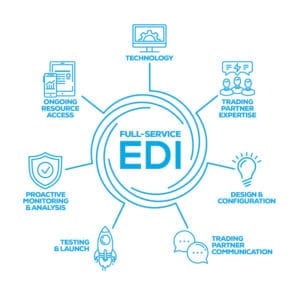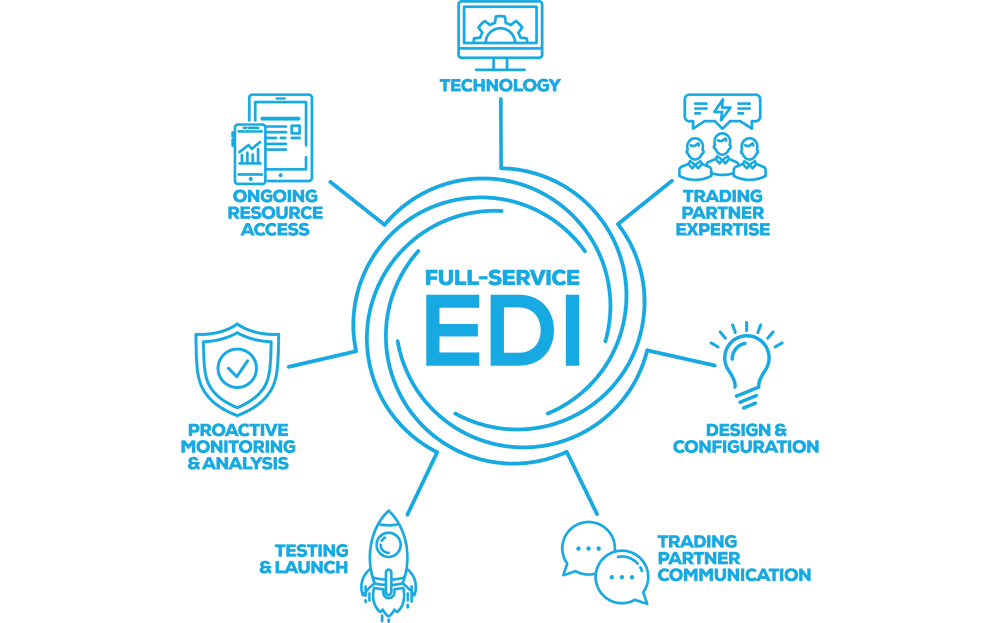Evaluating Your EDI Options: 7 Building Blocks of Full-Service EDI [White Paper]
Whether you’re new to EDI or an EDI veteran, the countless cloud type of EDI offerings available in the market today probably all sound the same.
A Google search for “EDI providers” leads to over 8 million results! Although the multitude of EDI services may sound similar, there are significant differences between providers. The most straightforward way to categorize these providers is by whether they offer a managed EDI service or a full-service solution.
What’s the difference between managed EDI services and full-service EDI?
A managed EDI service is a cloud-based solution in which the EDI provider is responsible for developing and maintaining the core technology, while the customer’s internal staff is responsible for the day-to-day customization, optimization and operations of the technology. Full-service EDI includes both the cloud-based solution and associated staff resources that customize, optimize and operate the technology. In this model, the EDI provider carries out a complete business function on behalf of the customer.
Which type of EDI solution is right for your business?
How can you tell whether your business needs managed services or a full-service EDI solution? The answer comes down to whether EDI is a core competency. In other words, does having EDI capabilities in-house create a competitive advantage for your company? Is having a dedicated team of EDI experts on staff something that you want for your business? If EDI is a core competency of your business, managed EDI services are a good choice. For many companies, EDI is an important requirement of doing business, but it is not a core competency. Instead, their core competencies revolve around activities that further their competitive advantage through product innovation, service delivery or other distinctive capabilities. For these businesses, a full-service EDI solution is the best option.
How can a full-service EDI provider help me?
Full-service EDI providers take ownership of understanding the EDI requirements and business rules of your retail customers, which are constantly changing. A full-service provider also proactively monitors and optimizes your EDI system, so you get the most value from your solution without having to understand the technical details yourself.  Full-service EDI solutions have seven primary components:
Full-service EDI solutions have seven primary components:
- Technology
- Trading partner expertise
- Design and configuration
- Trading partner communication
- Testing and launch
- Proactive monitoring and analysis
- Ongoing resource access
A truly full-service provider will be able to describe their capabilities in all of these areas, so you can get a clear picture of what ongoing tasks the provider will handle and what tasks (if any) your team will be responsible for. Get more insight on the full-service type of edi and the seven components it’s founded on by downloading our new white paper – Evaluating Your EDI Options: Seven Building Blocks of Full-Service EDI.
Evaluating Your EDI options: 7 Building Blocks of Full-Service EDI
Get insights on choosing the right EDI solution for your business and the seven components vital for truly full-service EDI.
GET THE WHITE PAPER- Automated Data Speeds Up 3PL Warehouse Operations - March 14, 2024
- Accurate Data Key to 3PL Order Accuracy - March 5, 2024
- When Omnichannel Retail Accelerated - December 3, 2021

RELATED POSTS
Building brand trust: why transparenc...
Advancing food supply chain visibilit...
4 key trends reshaping the food suppl...